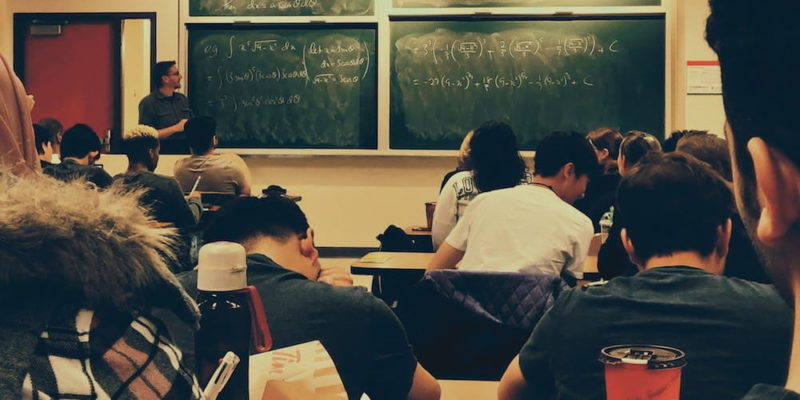We explain what social justice is, its principles, characteristics and examples. Also, equity and social justice in Mexico.

What is social justice?
Social justice is the attempt to achieve a situation of equity between individuals and social groups that make up a society. Although definitions and interpretations often vary, the concept is generally related to issues such as social equality, equal opportunities, the welfare state, labor demands, social inclusion and the fight against poverty.
In this sense, social justice is usually considered as a type of politics promoted by political and social movements that aspire to build a more equitable society from State institutions.
Since the mid-20th century, the concept of social justice has usually been identified with equal opportunities, the widespread recognition of basic rights (such as education, housing and decent work) and the application of measures aimed at improving the standard of living of people. workers and to distribute wealth more equitably.
These policies are usually aimed at compensate both people with limited resources and social groups that are victims of discrimination or marginalization. Although many intellectuals defend this type of measures, others reject them because they consider that they grant abusive power to the State over property rights or that they do not solve the structural problems of social inequality.
In 2007, the UN General Assembly proclaimed February 20 as World Day of Social Justice. According to the organization, the objective of this commemoration is to emphasize that “social development and social justice are essential for the achievement and maintenance of peace and security in nations.”
Key points
- Social justice is the pursuit of equity among citizens within a society.
- It aspires to a redistribution of wealth that reduces inequality and compensates marginalized, discriminated or impoverished people.
- It is based on equal opportunities, social inclusion, labor rights and other fundamental rights.
- It is considered a tool to combat poverty and promote sustainable and equitable economic growth.
- See also: Equal rights
Origin of the term “social justice”
According to some scholars, social justice has a antecedent in the concept of “distributive justice” proposed by Aristotle (384-322 BC) in Ancient Greece. This term refers to what is correct or fair in the distribution of goods within a society.
Aristotle introduced the idea that distribution is related to justice, but some authors maintain that his concept is not equivalent to that of social justice. This is because, for Aristotle, a fair distribution is one that takes into account the virtues and merits of each citizen, while modern notions of social justice emphasize measures taken to favor the most disadvantaged people in a context of inequality (that is, to achieve a more equitable distribution of wealth and basic rights).
An idea close to that of social justice appeared in the era of the Enlightenment, when various philosophers who promoted the search for happiness for all human beings stated that it was an obligation of European monarchs to guarantee greater justice in society.
In the 19th century, the expansion of capitalism and the new forms of economic inequality derived from the Industrial Revolution motivated certain reflections on the so-called “social question.” In this context, The Jesuit priest Luigi Taparelli (1793-1862) gave renewed vigor to the concept of “social justice” in the 1840s. and influenced the later social doctrine of the Church, which at the end of the 19th century and the beginning of the 20th century stated that social justice was related to human dignity and, therefore, economic redistribution should be encouraged according to the merits and needs of the people.
In the second half of the 19th century, utilitarian philosophers such as John Stuart Mill (1806-1873) followed an idea similar to Aristotle's distributive justice, as they defended the right of each individual to receive what was due to him. On the other hand, the concept of social justice was incorporated by some socialist movements that aspired to build a more egalitarian society, especially by the British Fabian Society, which proposed introducing gradual reforms within capitalism. This aspect of Fabian socialism influenced Labor and social democracy.
Throughout the 20th century, the meaning of social justice varied and incorporated various political, social, economic and legal demands. In general, it was associated with attempts to mitigate social inequality through a redistribution of economic resources mediated or supervised by the State which was sometimes presented as an alternative path to liberalism and communism. In fact, the International Labor Organization (ILO), an organization dedicated to improving working conditions in the world, included the term “social justice” in its inaugural document in 1919.
Characteristics of social justice
Social justice can be understood in different ways but it always revolves around the idea that societies can improve and guarantee a fairer distribution of wealth. In general, aims to reduce the margins of exclusion and discrimination and combat poverty and inequality which are characterized as indicators of “social injustice.”
Many and very diverse political organizations take this term as their slogan, but not all of them give it the same meaning or agree on the paths that must be taken to achieve it. For this reason, the characteristics of social justice vary depending on the perspective adopted.
In general terms, there are two groups of interpretations:
- Equal opportunities. Some suggest that social justice is about guaranteeing equality of opportunity so that each individual receives according to his or her own merits in conditions that are similar for all, in which a certain level of education is guaranteed and discrimination is not promoted for any reason. reason.
- Equality of positions. Others propose that social justice is about guaranteeing equality of positions, that is, satisfying the basic needs of all citizens through access to decent conditions of education, housing and employment and some mechanism for the redistribution of wealth that favors the poor. most vulnerable and reduce social inequality.
Added to these differences are the different methods proposed. Some advocate revolutionary action to seize power and promote a forced redistribution of economic resources. Others propose a gradual reform process that expands rights from State institutions. These rights can promote equal opportunities, in a context dominated by private initiative, or assign a more active role to the State in the redistribution of wealth and the implementation of social welfare policies, as occurs in State models. well-being and in democracies that favor strong social investment by the public sector.
Importance of social justice
The importance of social justice lies in the fact that it aims to guarantee equal opportunities for all citizens, regardless of their origin, ethnicity, socioeconomic level, gender and other characteristics. Furthermore, it tends to guarantee the satisfaction of basic needs and respect for the fundamental rights of people, which can contribute to reducing social inequality and promote the construction of more peaceful and prosperous societies.
The promotion of social justice is considered a way to combat poverty and the lack of opportunities among the most disadvantaged sectors of the population. In this sense, organizations such as the ILO (International Labor Organization) understand that social justice implies equitable access to opportunities and rights, especially to decent work, and that as long as all people receive a share of the wealth, a better future will be promoted. equitable and sustainable economic growth.
Principles of social justice

The principles of social justice are not universal nor do they remain unchanged over time. But broadly speaking, they can be summarized as:
- Social equality. It is the situation in which all citizens of a society, without exclusion, have their human, civil, political, social and economic rights guaranteed, which includes equality before the law and equal opportunities. In a strict sense, it also implies the absence of significant social and economic inequalities, although in contemporary societies this is only an ideal, and social equality is usually manifested rather in policies aimed at guaranteeing decent living conditions.
- Equal opportunities. It is the guarantee that all individuals, regardless of their social class, ethnicity, gender, among other factors, have the same opportunities for personal development and to take advantage of their abilities to improve their social and economic position. This concept emphasizes personal merit and the existence of a basic situation that guarantees universal conditions, such as widespread access to education and employment opportunities, and that are not hindered by any form of discrimination.
- welfare state. It is a model of state organization in which the State is responsible for providing a series of services to its citizens with the objective of guaranteeing compliance with their social rights, promoting social well-being and reducing social inequality generated by differences in economic income. This includes public health and education systems, pensions and unemployment insurance, and various forms of social assistance.
- Income redistribution. It is the principle that attempts to confront the inequality generated by the different levels of economic income within a society through the distribution of the income generated in society, especially from the richest sectors to the most vulnerable. This can be done in many ways, especially through progressive taxes (which increase the tax burden according to the economic capacity of the person paying the tax) and social aid (which provides resources to the most disadvantaged sectors).
- Defense of labor rights. It is the protection of the activity of unions and other trade organizations and respect for labor laws, which allow workers to defend their interests and improve their standard of living in a context marked by economic inequality between employers and employees. In this sense, the State usually acts as a mediator in the matter.
Examples of social justice
Some examples of policies inspired by the idea of social justice are the following:
- Scholarship plans for studies. They aim to improve access to education for children and young people from low-income sectors, with the aim of equalizing their job opportunities with those of the most favored social sectors and rewarding effort regardless of socioeconomic conditions.
- Labor rights. They tend to improve the quality of life of workers and limit possible abuses by employers, such as laws that guarantee the eight-hour work day, weekly rest, severance pay, minimum wage, social security or unionization.
- Promotion of gender equality. It is aimed at promoting equal opportunities for men and women in the areas of work, education and public service. It also involves measures to prevent gender violence, encourage salary equalization and establish quotas to guarantee access to certain positions for women and trans people.
- Access to health. It involves ensuring that all people can receive medical care, regardless of their socioeconomic conditions. It may be a public health system (administered by the State), the granting of subsidies or the implementation of plans to reduce costs in medical care or the purchase of medicines, the installation of health services in marginal areas, among others. others.
- Social inclusion. It involves the application of policies that favor the inclusion of vulnerable or disabled people in various areas of society, such as education, employment, politics and cultural activities. For example, accessibility policies guarantee universal access to buildings, services or goods by adapting to certain established standards, which avoid the exclusion of people with reduced mobility or other characteristics.
Social justice and equity
Social justice is presented as one of the paths towards equity, understood as the fair distribution of the wealth generated in a society which means giving each person what they deserve and need with the aim of building a less unequal society.
Equity aims to recognize the diversity that can exist in a society and take measures to ensure equal opportunities such as the possibility of having a decent job.
To achieve this, resources are invested in promoting the economic growth of the least favored sectors, mainly those who are born in conditions of poverty and who require more attention to ensure their participation in equal opportunities. In this way, people can receive according to their effort and not their conditions of birth. Likewise, accessibility policies are adopted to ensure a decent life and employment for people with disabilities.
- Equity
Social justice in Mexico
Mexico is one of the most unequal countries in Latin America. Furthermore, poverty in Mexico is greater among the indigenous sectors of society, so inequality has not only a social but also an ethnic component.
According to 2022 figures, 36.3% of Mexico's population is below the poverty line, which represents about 46.8 million people. Of them, 8.3 million belong to indigenous ethnic groups, which means that 65% of Mexico's indigenous population lives below the poverty line. Finally, 3.3 million indigenous people (26.3% of the total indigenous population) are in a situation of extreme poverty, that is, outside of such basic well-being indicators as access to basic services or education.
Successive governments have implemented social assistance programs with the intention of eradicating extreme poverty and promoting social inclusion, such as the Prospera program, in force between 2014 and 2019, and the Benito Juárez Wellbeing Scholarships, started in 2019. However, These programs did not reduce social inequality or eliminate poverty, which is why social justice continues to be a challenge in Mexico.
document.addEventListener(“DOMContentLoaded”, (e) => {
var sliderContainer, slider;
sliderContainer = document.getElementById(‘block_27ec146c1227435becb9f38bd0ce555f’);
if (typeof initSlider !== ‘function’) {
console.log(‘Swiper haven\’t been loaded’);
sliderContainer.className += ‘ fw scroll-snap’;
return;
};
options = {
direction: ‘horizontal’,
speed: 1000,
slidesPerView: ‘auto’,
// slidesPerGroup: 1,
centerInsufficientSlides: true,
// centeredSlides:true,
spaceBetween: 15,
breakpoints: {
720: {
// centeredSlides: false,
// slidesPerGroup: 2,
spaceBetween: 25
},
},
pagination: {
el: ‘.swiper-pagination’,
type: ‘bullets’,
clickable: true
},
}
slider = initSlider(sliderContainer, options);
})
References
- Bobbio, N., Matteucci, N. and Pasquino, G. (Dirs.). (2015). Politics Dictionary. 21st century.
- National Council for Evaluation of Social Development Policy. (2023). Analysis document on multidimensional poverty measurement, 2022. https://www.coneval.org.mx/
- Dubet, F. (2011). Rethink social justice. Against the myth of equal opportunities. 21st century.
- Duignan, B. (2024). Social justice. Encyclopedia Britannica. https://www.britannica.com/
- United Nations (sf). World Day of Social Justice – February 20. United Nations. https://www.un.org/
- Pérez-Garzón, CA (2019). What is social justice? A new history of its meaning in transnational legal discourse. State Law Magazine(43), 67-106. https://revistas.uexternado.edu.co/





